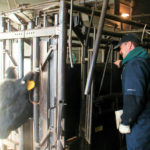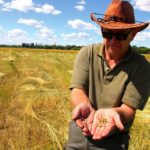
Tag Archives University of Alberta

Post-calving nutrition determines next year’s success
Management: Your cow's nutritional regime will have a major influence on when and if it gets bred.

First EPDs for udder and teat conformation in the works
Angus herds studied for desirable traits to improve genetic selection
New ‘Food and Farm’ champion, Cattlemen hires new field editor
NewsMakers from the February 2018 issue of Canadian Cattlemen

Get cows and heifers ready for winter now
No matter your feeding system, have your breeding animals in good condition before the snow flies

Biochar could be a game changer
Environment: News Roundup from the June 2017 issue of Canadian Cattlemen

Locking down feedlot ammonia emissions
Sustainability: News Roundup from the May 2017 issue of Canadian Cattlemen

Drilling down on carbon sequestration
New 10-year study looks for a more accurate formula to calculate the carbon-swallowing value of native grass

Harvie Ranching Hereford named 2016 Miss World Champion
Purely Purebred with Mike Millar: News about you from the March 2017 issue of Canadian Cattlemen

Who will breed the next generation?
Forages aren’t only suffering from a shortage of research dollars, but a shortage of researchers to do the work if the money were available

You judge the heifers! Part 1
Can you spot the genomics at work?



